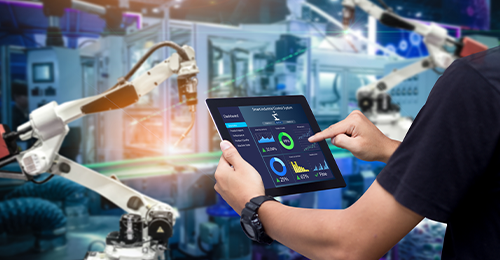Tech to Navigate the Aftermath of Supply Chain Crisis
28th July 2022

By Stefan Spendrup, VP of Sales, Northern and Western Europe at SOTI.
The supply chain is a complex system many of us rarely think about when shelves are fully stocked and delivery vehicles are on the road. However, many of us experienced the impact of disruptions to transportation and logistics (T&L) at one point or another during the pandemic.
There were numerous contributing factors to the emergence of the global crisis. First, businesses struggled to anticipate and react to the pandemic due to a limited view of supply chains. In fact, 72% of companies faced challenges in monitoring their end-to-end supply chain. Without having an overview of the location and status of inventory, or the ability to forecast customer demand to prepare for a surge in sales, businesses could not react quickly enough and plan the right course of action.
On top of this, businesses struggled with both sourcing and receiving products. With such high dependence on China for the manufacturing of products around the world, businesses experienced a shortage of products and loss of sales because of the inability to fulfil customer needs as it became harder to import goods from China. In the U.S., 60% of businesses experienced delays in receiving orders from China.
Additionally, products were stranded at sea on cargo ships due to maritime mobility issues. This was detrimental as 80% of all goods are carried by sea, resulting in over 320 cargo ships left queued and waiting to dock. Faced with the pressure to keep up with customer demand, businesses battled increased shipping costs – the cost to transport a shipping container from China to the North American West Coast is now four times higher than before the pandemic.
As the U.S. announces its plans to ban imports from China’s Xinjiang region in response to forced labour outrages, many manufacturers and retailers are bracing for the consequent disruptions to supply chains and having to quickly switch to alternative suppliers to satisfy customer demand and meet sales targets.
To protect and prevent further disruptions to supply chains, businesses must implement plans to fix the broken links. This involves intensifying supply chain diversity by having multiple options when it comes to suppliers, such as procuring raw materials, manufacturing, warehouse storage and shipping. However, supply chain resilience is just as important in the reaction to a disruption.
Despite the disruptions and uncertainty caused by the pandemic, businesses still have faith in the supply chain. In fact, 92% of businesses did not halt technology investments. Technology is the only answer to increasing diversity and digitising the supply chain, but how will it be restored to pre-pandemic efficiencies?
The pandemic completely changed consumer shopping behaviours, evidenced by the unpredictable rise in purchases of items like toilet paper and a spike in hobby items such as puzzles and gardening tools. However, rather than using unreliable past trends to predict consumer behaviours, artificial intelligence (AI) and machine learning can help direct companies on everything from inventory recommendations to distribution strategies to suppress the impact of future crises.
Sustainability has been at the forefront of many business models as the world moves closer to sustainability targets. Sustainability efforts were paused during the pandemic, where the focus shifted to operating as close to business as usual at the cost of using sustainable resources. As we emerge from the pandemic, sustainability is back atop business agendas.
Warehouses are integrating timers to control lighting, heat, water, gas and temperature, and road freights have adopted sensors on trucks to monitor tire pressure and fuel efficiency. Automation can predictively schedule vehicle maintenance to keep that part of the supply chain as green as possible.
The pandemic led to mass unemployment, resulting in key transportation and delivery links lacking staff. For example, the U.S. trucking industry is short 80,000 drivers, but many people who lost employment across a range of industries due to COVID-19 are now looking to move into the trucking sector. To better manage the recruitment process, technology can be used to attract, screen and retain talent that matches vacant roles.
Amid a spike in demand for personal protective equipment (PPE), such as masks, face shields and medical equipment like ventilators, 3D printers were able to manufacture these essential items and supply health services.
Mobile barcoding stepped up as a reliable practice during the pandemic. Workers across the industry used outdated manual processes, such as filling out forms with a pen. Instead, mobile barcoding has protected workers who are mindful of social distancing by digitally capturing the data so it can be shared accurately and efficiently, eliminating in-person contact and preventing further complications.
Digitising is the Future
The pandemic accelerated the adoption of technology, with 36% of executives saying COVID-19 accelerated the digital transformation of their supply chains. Such digital transformations are here to stay, and as businesses rely on processes such as mobile device deployment, rapid app development, incident management, operational intelligence and the management of Internet of Things (IoT) devices, they must find more ways to digitise processes and protect themselves from future crises by using technology to locate devices, remotely solve issues and access critical device data.

